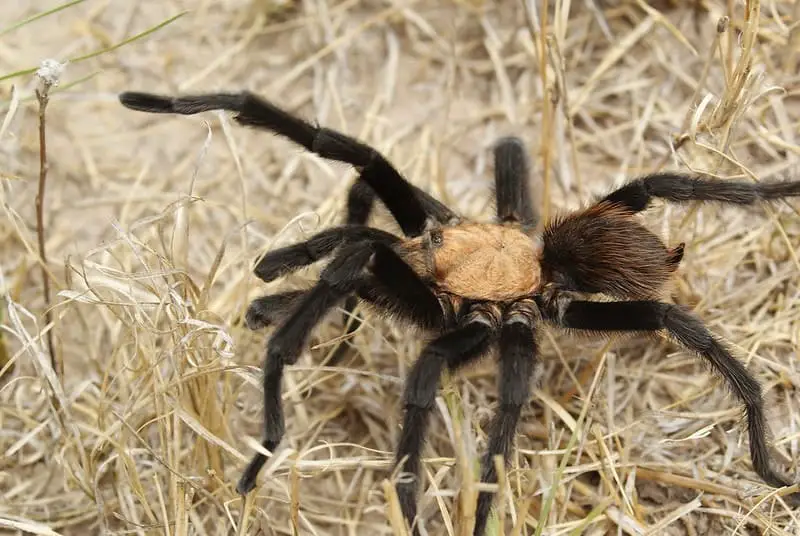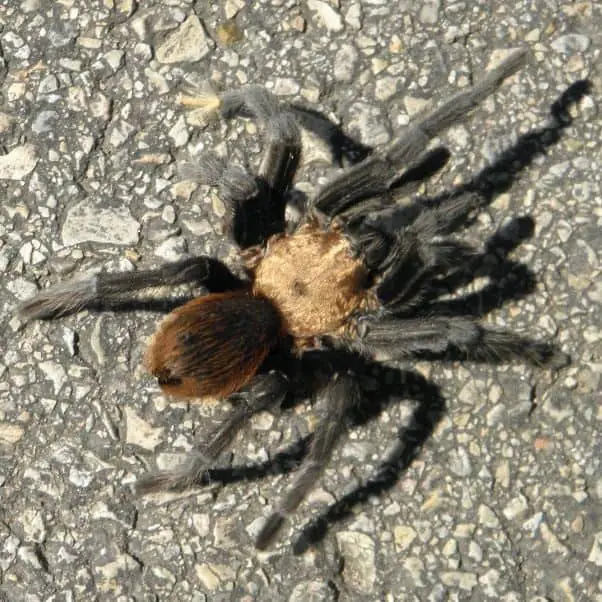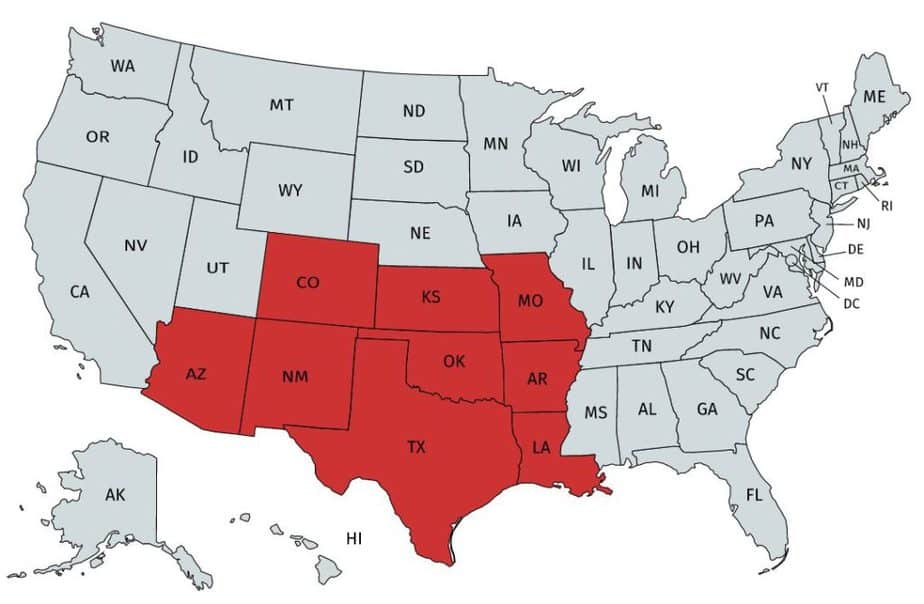Aphonopelma hentzi, the Texas brown tarantula is one of the largest species of spiders native to the Southern United States. The large brown and furry spider lives in arid climate. Since they are a non-aggressive and docile species, they have become a popular pet spider throughout the U.S. and in other parts of the world.
Texas Brown Tarantula Description
As can be guessed from its common name, the predominant color of the Texas brown tarantula are various shapes of brown. Their large cephalothorax usually comes in a lighter brown. The abdomen comes in a darker brown covered with fine orange or lighter-brown hairs. Their legs, pedipalps and chelicerae (jaws) are often darker, sometimes black and covered in fine hair as well. The Female specimen have been observed to live up to over 40 years, making it one of the longest living spider species. While males have been observed to live up to seven years, most wild specimen will only live up to an age of one year, where they reach maturity.

Size
The Texas brown tarantula is one of the largest spider that is native to the Southern United States. The body of an adult female specimen is typically between 1.4 to 2 inches long (35-50 mm). Their leg span can be up to 4 inches (10 cm).
Web
As all other tarantulas, the Texas brown tarantula is a hunter spider and does not spin a web to catch its prey. However, they do have the ability to create a web and do so for several reasons. Since Texas brown tarantulas live in dry and arid environments, they often use their silk to support the structures of soil and sand where they live in.
Furthermore, Texas brown tarantulas create and egg sac shaped like a hammock with their silk glands that can hold up to 1,000 eggs. After laying the eggs, the female guards the egg sac in its burrow for 45-60 days before they hatch.
Since they don’t have a very good eyesight, despite having eight eyes, these tarantulas sometimes spin several strands of silk to support their hunting efforts. As soon as an insect touches the silk, the spider, waiting on the other end, can feel the vibration and knows that it is feeding time.

Bite
The Texas brown tarantula is not an aggressive spider and bites to humans occur very rarely. If you happen to run into one of them, they will most likely run away before you will even have the chance to identify it. In the case that the spider is backed up into a corner or if they feel threatened, they often lift their two front legs to appear larger. If you notice this behavior, it is best not to handle the tarantula. It might defend itself with a bite if it feels overly threatened and can’t run away.
In the rare cases where a bite happens, it is usually not threatening. Their venom is not strong enough to cause any major discomfort for humans. In very few cases, allergic reactions may occur. However, due to the large fangs of the spider, the bite itself can be somewhat painful. A bite should be disinfected properly to avoid infections.
Aphonopelma hentzi scientific classification
- Kingdom: Animalia
- Phylum: Arthropoda
- Subphylum: Chelicerata
- Class: Arachnida
- Order: Araneae
- Infraorder: Mygalomorphae
- Family: Theraphosidae
- Genus: Aphonopelma
- Species: Aphonopelma hentzi
Other common names
Next to its most common name “Texas brown tarantula”, Aphonopelma hentzi is also commonly known as: Texas tarantula, Oklahoma tarantula, Missouri tarantula.
Texas Brown Tarantula Range in the US

As its common name suggests, the Texas brown tarantula occurs in the Southern states of the U.S. Namely, these are: Arizona, Arkansas, Colorado, Kansas, Louisiana, Missouri, New Mexico, Oklahoma, Texas.


We was camping in Meridian state park in Meridian, tx. When we came across a brown tarantula. I took a picture of it and I walked away from it.
Seen on the cinder blocks under a wooden front porch at a cabin in Broken Bow, Oklahoma.
Hello John, this is a tarantula (Aponophelma) – there are several species of tarantulas in your area and they are hard to tell apart from the distance. It might be a Texas brown tarantula: https://usaspiders.com/aphonopelma-hentzi-texas-brown-tarantula/
What type of spider is this
Hi tmanti, this is definitely a tarantula of the genus Aphonopelma. Possibly a Texas brown tarantula (Aphonopelma hentzi): https://usaspiders.com/aphonopelma-hentzi-texas-brown-tarantula/
Your location would help to narrow down on the exact species.
Texas Brown Tarantula found in Hot Springs, Arkansas near Lake Ouachita. October 2022
I am visiting in Denison, TX. Please identify this critter. Thank you.
Hi Reva, this is a wolf spider (Lycosidae family)
I am in Plano, TX and this was in my driveway until shooed up the tree. Texas Brown Tarantula is what Im told.
This was in my driveway in Plano, TX. I have never seen this type of spider and it was huge. I shooed her to a tree. a Texas Brown Tarantula is what I am told.
Found this Texas Turantula on a Kerrville, Tx sidewalk at my apartment complex. It was being challenged by a sparrow hopping around it. I chased it into the grass and noticed a big hole nearby, dug up against the side of a sewer manhole. I wonder if she was guarding eggs, and hence why she was reluctant to run.
This Oklahoma brown tarantula I found in Valliant, OK. It was really big, about 4” the body alone. It wasn’t in any hurry to go anywhere
Texas Brown Tarantula. Eeek